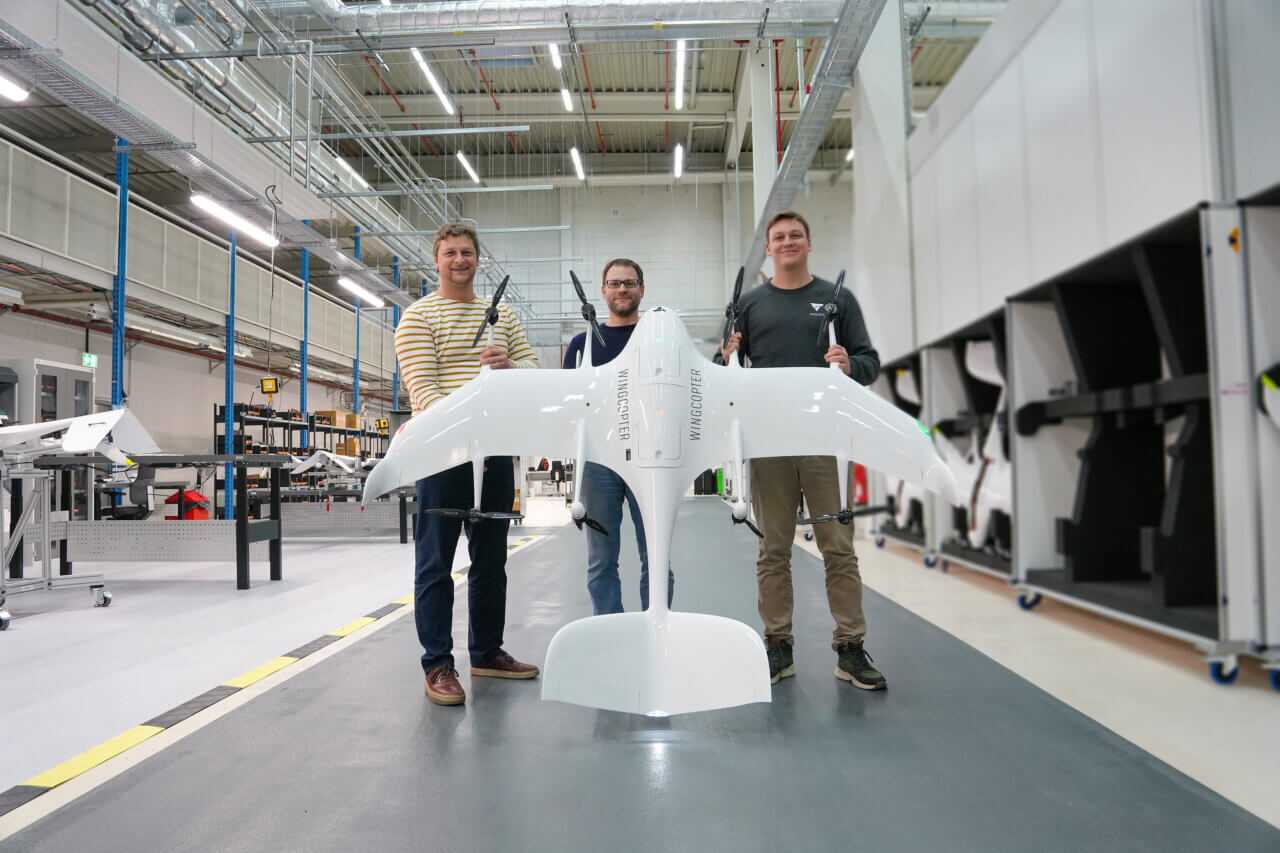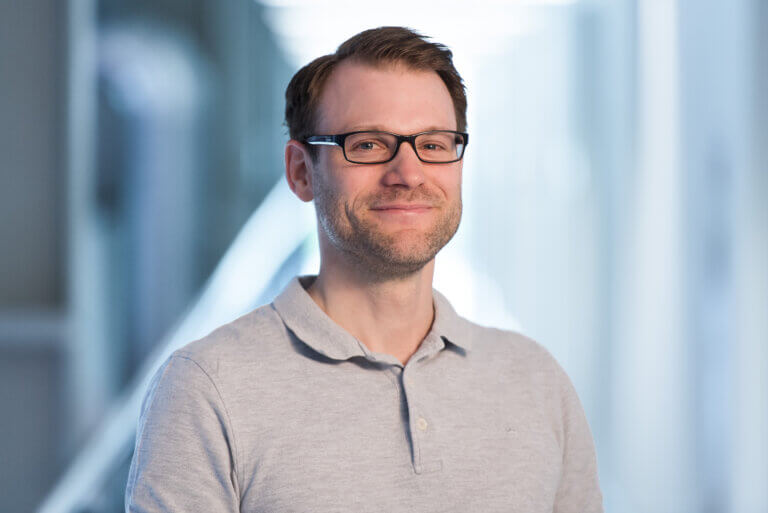The vision of improving or even saving people’s lives with delivery drones is both widely known and challenging. One company that has succeeded in implementing this vision is Wingcopter. With its eponymous drone, the company has proven that it can successfully deliver medical goods to geographically difficult-to-reach regions in Africa, Europe, and other parts of the world. The delivery drones are characterized by flight efficiency and high resilience. In the future, the plan is to take off with green hydrogen-powered drones, making them not only emission-free but also more powerful in terms of range. The project-specific conversion of the Wingcopter takes place in Hamburg at ZAL. In the context of a development partnership with ZAL GmbH, a solution is being developed that should fit into the existing technical ecosystem of the delivery drone.
There is a busy buzz in the brightly lit production and development halls of Wingcopter. Numerous units of the striking eVTOL fixed-wing drone are lined up and ready for dispatch, including one addressed to the ZAL TechCenter.
“We are very excited about the collaboration with ZAL GmbH. We have always wanted the Wingcopter to fly even further and have thought about fuel cells. We are pleased that we were able to win the experts of ZAL GmbH as partners to explore technical possibilities in this field together,” explains CEO Tom Plümmer.
Wingcopter is considered one of the leading start-ups in the field of delivery drones. With a modern production and now over 160 employees, the company is growing out of the description “start-up.”
Advantages of combining multicopters and wings
The most important feature of the Wingcopter 198 is already contained in its name because it takes off vertically like a multicopter and then switches to efficient forward flight. This is made possible by swiveling rotors, a patented concept from their own development. The additional lift of the wings allows for greater distances to be covered at high speeds.
Wingcopter’s mission: to save and improve people’s lives. Many of the previous missions are therefore in humanitarian areas, such as delivering medical goods to remote villages in Malawi in partnership with UNICEF and GIZ. When delivering insulin to the Irish island group of Aaran, the Wingcopter also withstood the rough weather of the Atlantic. By increasing the flight range, the Wingcopter’s range of applications would become even more diverse: reaching more people and more distant destinations.
Flying longer with hydrogen
In the Fuel Cell Lab of ZAL GmbH, the engineers are now implementing the development project. The most important requirement for the development project is to increase flight duration while maintaining the Wingcopter’s characteristic flight capabilities. In the past, ZAL experts were able to achieve a flight time of over two hours with their own hydrogen drone, the ZALbatros. Compressed gaseous hydrogen was used in combination with a fuel cell. A comparable technology will also be used in the Wingcopter.
Roland Gerhards, CEO of ZAL GmbH, explains: “Our mission is to bring hydrogen into the air and create innovative solutions for sustainable aviation. With Wingcopter as our partner, we’re not only impressed by their drones’ flight performance, but also by their clear vision of how urban air mobility and especially drone delivery can help improve people’s lives. This aligns perfectly with ZAL’s values. With our expertise, we want to convert the Wingcopter to hydrogen and thus strengthen the Hamburg UAM network Windrove with another flagship project.”
Have we made you curious about this project? Send us a message!






